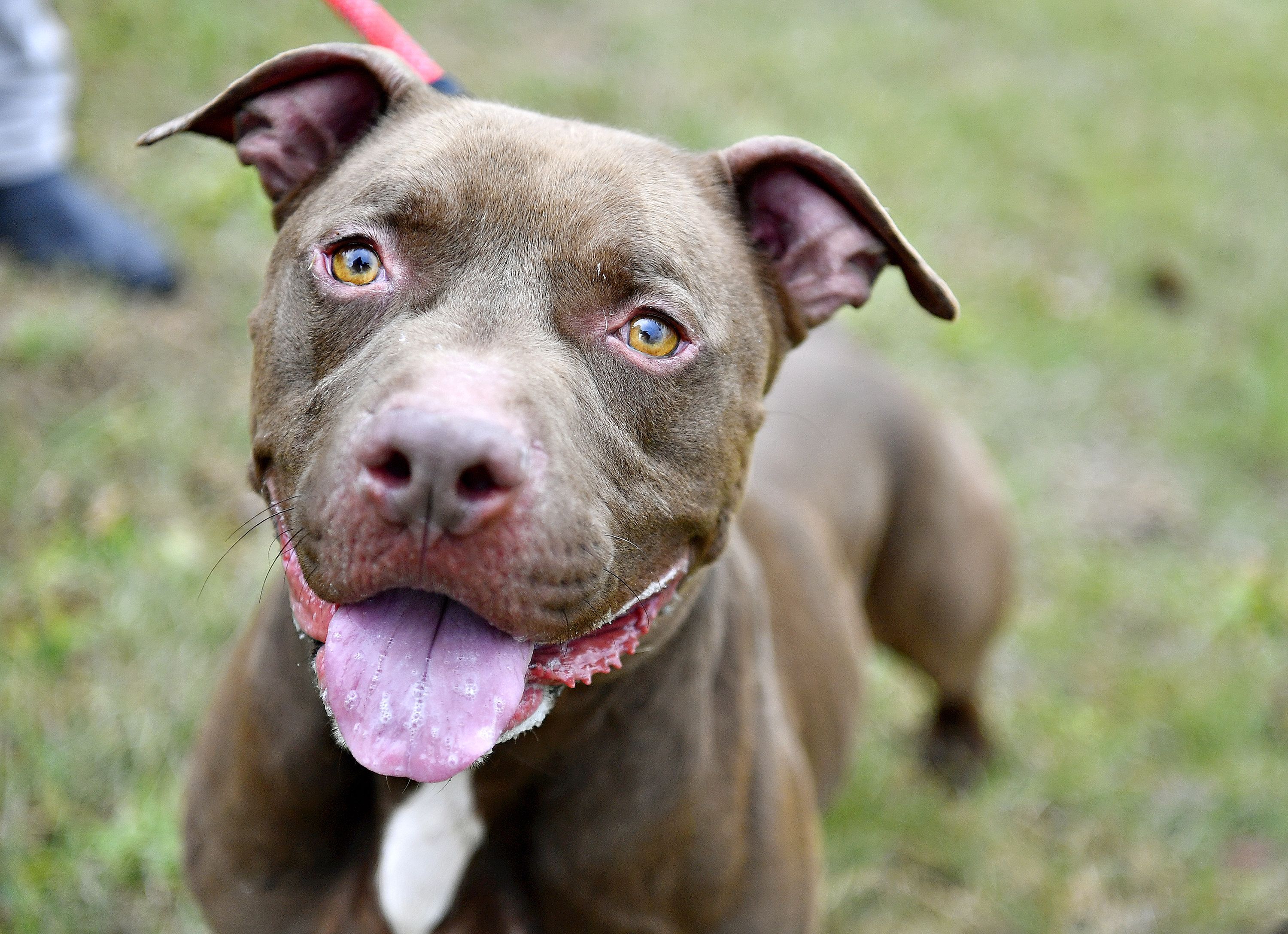
One of the most common questions our staff receives from community members when they walk through our shelter is, “Why are there so many Pit Bulls?”
Now, while we are prepared to answer this question with a few simple sentences, it runs deeper than that. Unfortunately, we receive a large influx of Pit Bull-type dogs because they are the most overbred type in York County and in the country. Many Pit Bull-type dogs end up as strays due to overbreeding and end up at animal shelters. Our staff and volunteers love them just the same as any other dog we care for; in fact, many of them end up becoming favorites.
A common mistake we hear people make is referring to a specific dog’s breed as “Pit Bull.” What many do not realize is that “Pit Bull” is an umbrella term which refers to three registered breeds of dogs: Staffordshire Bull Terrier, American Staffordshire Terrier, and American Pit Bull Terrier. Most Pit bull-type dogs are a combination of different breeds of unknown pedigree or purebred dogs. What most often occurs is a dog being labeled as a “Pit Bull” due to their physical appearance and characteristics: a stocky stature, wide mouth, square-shaped head, and short coat. Pit Bull-type dogs tend to vary in size, depending on what combination of breeds they are made of and their parents’ genetics, however, most fall between 30 and 85 pounds.
Let’s break down the registered breeds that make up the category of “Pit Bulls”:
- The Staffordshire Bull Terrier: Recognized as a breed in 1974 by the American Kennel Club, this breed holds the traits of courage and tenacity. Their defining characteristics are a short and broad head, pronounced cheek muscles, a tight-fitting coat coming in several colors, and a height of 14 to 16 inches.
Photo Credit: https://www.bil-jac.com/breed-library/staffordshire-bull-terrier/
- The American Staffordshire Terrier: This breed was recognized by the AKC in 1936 and is known for confidence, intelligence, and loyalty to their people. AmStaffs, another name for them, stand between 17 and 19 inches, have a broad head, well-defined jaw, pronounced cheekbones, and dark, round eyes set wide apart. They have a stiff, glossy coat that comes in a variety of colors and patterns. This breed is highly trainable.
Photo Credit: https://www.orvis.com/american-staffordshire-terrier.html
- The American Pit Bull Terrier: While the AKC does not recognize this breed, the United Kennel Club (UKC) did in 1898. They exhibit muscular, stocky builds with large square heads. They also have strong, well-defined chests. American Pit Bull Terriers typically stand between 17 and 21 inches. Best known for their active, loyal, and eager-to-please temperaments, they make for wonderful, life-long companions.
Photo Credit: https://www.petguide.com/breeds/dog/american-pitbull-terrier/
Pit Bull-type dogs are often misunderstood through stigmas passed down from previous generations. They are often labeled “aggressive” or “dangerous” when most Pit Bull-type dogs make amazing furry family members and do not pose a threat to humans or other animals. Now that you know these important facts about Pit Bull-type dogs, it’s time to stop the spread of misinformation and advocate for them in your community. Perhaps you even have it in your heart to foster or adopt one of these extraordinary canines.
To view our available dogs here at the York County SPCA, visit www.ycspca.org/adopt.
References:
The American Kennel Club, Inc. (n.d.). American Staffordshire Terrier. American Kennel Club. Retrieved January 5, 2024, from https://www.akc.org/dog-breeds/american-staffordshire-terrier/
The American Kennel Club, Inc. (n.d.). Staffordshire Bull Terrier. American Kennel Club. Retrieved January 5, 2024, from https://www.akc.org/dog-breeds/staffordshire-bull-terrier/
Chewy (2022, October 12). American Pit Bull Terrier. BeChewy. Retrieved January 5, 2024, from https://be.chewy.com/dog-breed/american-pit-bull-terrier/
The Farmer's Dog (2020, July 10). The Pit Bull Guide: History, Personality, Food, Care, and More. The Farmer's Dog Digest. Retrieved January 5, 2024, from https://www.thefarmersdog.com/digest/pit-bull-guide-history-personality-food-care/#:~:text=Other%20dogs%20end%20up%20falling,not%20unique%20to%20pit%20bulls.
Graham, L. (2021, October 7). 5 Facts About Pit Bull-type Dogs. Retrieved January 5, 2024, from https://www.arlboston.org/5-facts-about-pit-bull-type-dogs/














